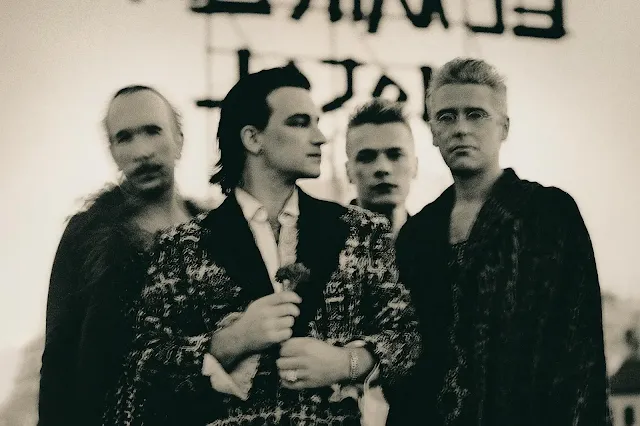Dave Coutts, previously the frontman for the band Ten Inch Men, was brought into the fold, adding a new dynamic to the group. Coutts' distinct vocal style and musical approach were set to differentiate Talk Show from STP's well-established sound. This collaboration was not just a mere continuation of STP with a different singer, but an endeavor to explore new musical territories.
Talk Show's self-titled debut album, released in 1997, showcased a sound that, while bearing some stylistic resemblances to STP, carved out its unique identity. The album leaned towards alternative rock, displaying a blend of melodic hooks and a slightly more pop-oriented approach compared to STP's grunge-heavy style.
The dynamic within Talk Show was notably different from that of STP. With the DeLeo brothers and Kretz having a strong musical chemistry from their time in STP, they brought a cohesive and experienced approach to the project. Dave Coutts, with his background and influences, contributed to a fresh perspective. This synergy allowed the band to create something that was familiar yet distinct from their work in STP.
While Talk Show received moderate critical acclaim, it did not achieve the commercial success anticipated. The album's singles, such as "Hello Hello," showcased the band's potential, but they failed to make a significant impact in the crowded alternative rock scene of the late 90s. The band disbanded shortly after, with the members returning to their respective projects.
Talk Show's brief existence and its album remain a point of interest for fans of STP and 90s rock aficionados. It serves as a testament to the versatility and creativity of the musicians involved and remains a noteworthy footnote in the era's musical tapestry. The project highlights the fluid nature of rock bands during this period, where side projects and collaborations were common, reflecting the exploratory spirit of the musicians and the genre itself.
About the album itself:
Key Singles and Popular Songs
- "Hello Hello" stands out as the album's most notable single. This track, with its catchy chorus and polished production, had the potential to be a significant hit. It exemplifies the group's ability to meld alternative rock with pop sensibilities, creating a sound that was both radio-friendly and artistically rich.
- "Everybody Loves My Car" offers a different flavor, showcasing the band's playful side. The track's upbeat tempo and humorous lyrics mark a departure from the often serious tone of alternative rock, highlighting the band's versatility and willingness to experiment.
Deep Cuts and Fan Favorites
Tracks like "Peeling an Orange" (covered for a long time by Wellington's Silverfish) and "So Long" demonstrate the album's range, moving into more introspective and emotional territory. These songs, characterized by their softer melodies and reflective lyrics, offer a deeper insight into the band's artistic sensibilities."End of the World" and "Hide" delve into darker, more complex themes. These tracks are notable for their thematic depth and intricate musical arrangements, showcasing the band's ability to explore various moods and styles within the alternative rock genre.
Trivia and Behind-the-Scenes Insights
In sum, "Talk Show" stands as a fascinating footnote in the history of alternative rock. The album's diverse tracks—from the catchy hooks of "Hello Hello" to the introspective melodies of "Peeling an Orange"—highlight the creative breadth and depth of its members. While it may not have reached the commercial heights of STP's work, the album remains a cherished piece among fans and a testament to the diverse musical landscape of the era.
The production of "Talk Show" was overseen by the band members themselves, particularly the DeLeo brothers, known for their meticulous attention to detail and profound understanding of musical textures. This self-production approach allowed for a more personal and introspective crafting of the album, ensuring that each track resonated with the band's artistic vision. The involvement of Dave Coutts brought a fresh perspective to the production process, his distinct vocal style and lyrical approach adding a new layer to the soundscapes created.
Recorded in a period where digital recording was becoming more prevalent, "Talk Show" benefitted from a blend of analog warmth and digital clarity. The choice of studios and recording equipment played a significant role in capturing the essence of the songs. The band leaned towards using a mix of vintage and modern gear, striking a balance between classic rock tones and contemporary clarity. This approach is evident in tracks like "Hello Hello" and "Everybody Loves My Car," where the crispness of the recording complements the energetic performances.
The engineering and mixing of the album were critical in achieving the desired sound. The use of layering, particularly in the guitar tracks, is a standout feature, showcasing Dean DeLeo's skill in creating rich, textured soundscapes. The bass and drum sounds were meticulously crafted to provide a solid foundation for the songs, with Robert DeLeo's bass lines and Eric Kretz's drumming being both prominent and nuanced.
The album's production also shines in its ability to convey emotional depth. Tracks like "Peeling an Orange" and "Behind" demonstrate a more subdued and introspective production style, allowing the emotional weight of the lyrics and melodies to come to the forefront. The use of acoustic elements in songs like "Morning Girl" adds a layer of warmth and intimacy, further highlighting the band's versatility.











